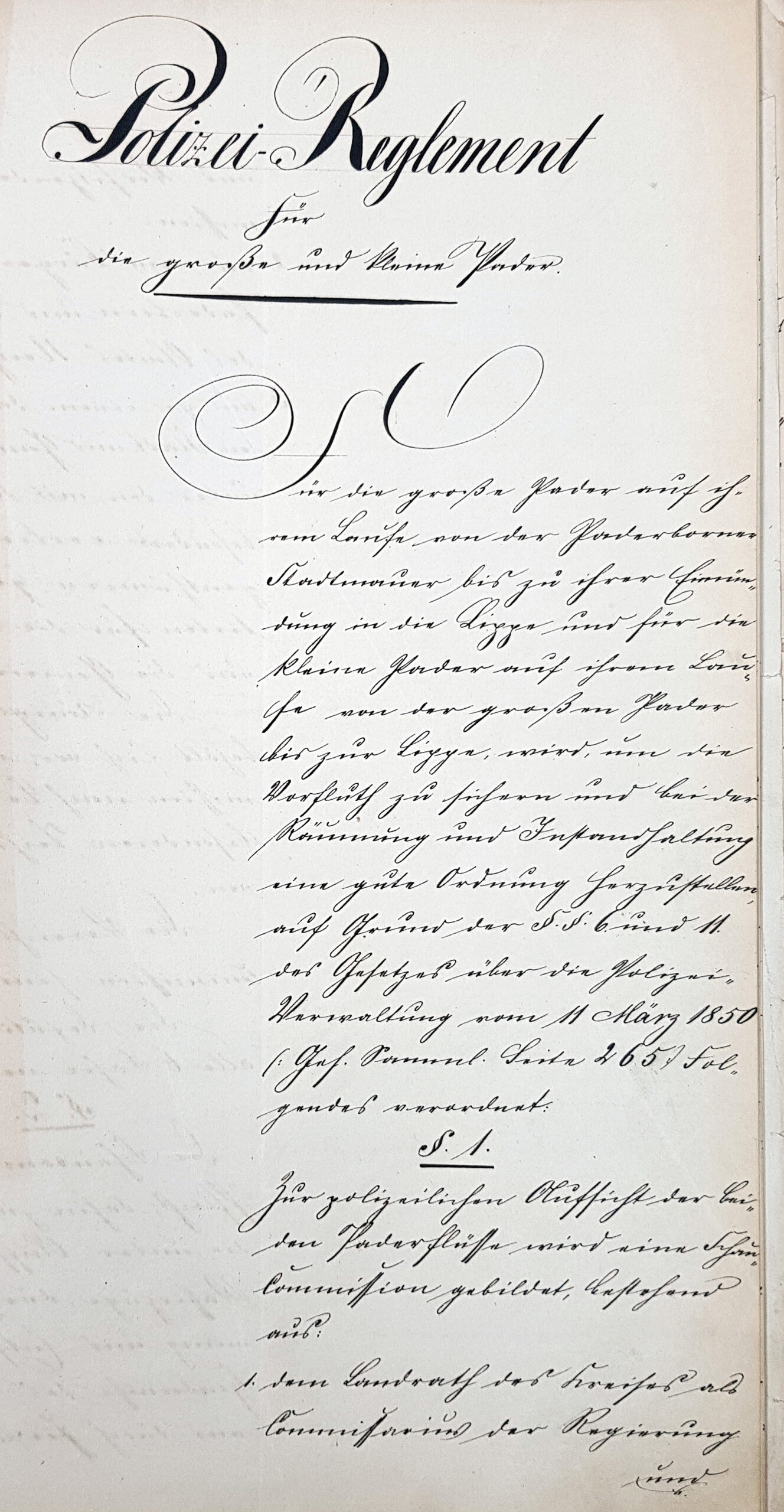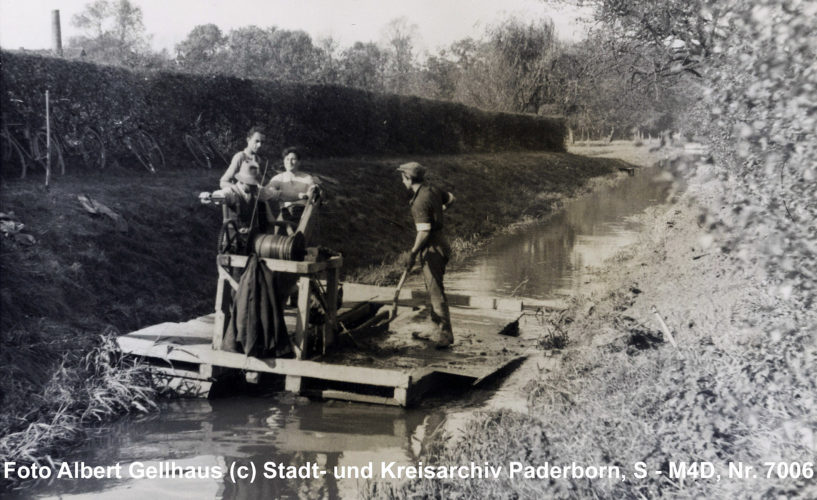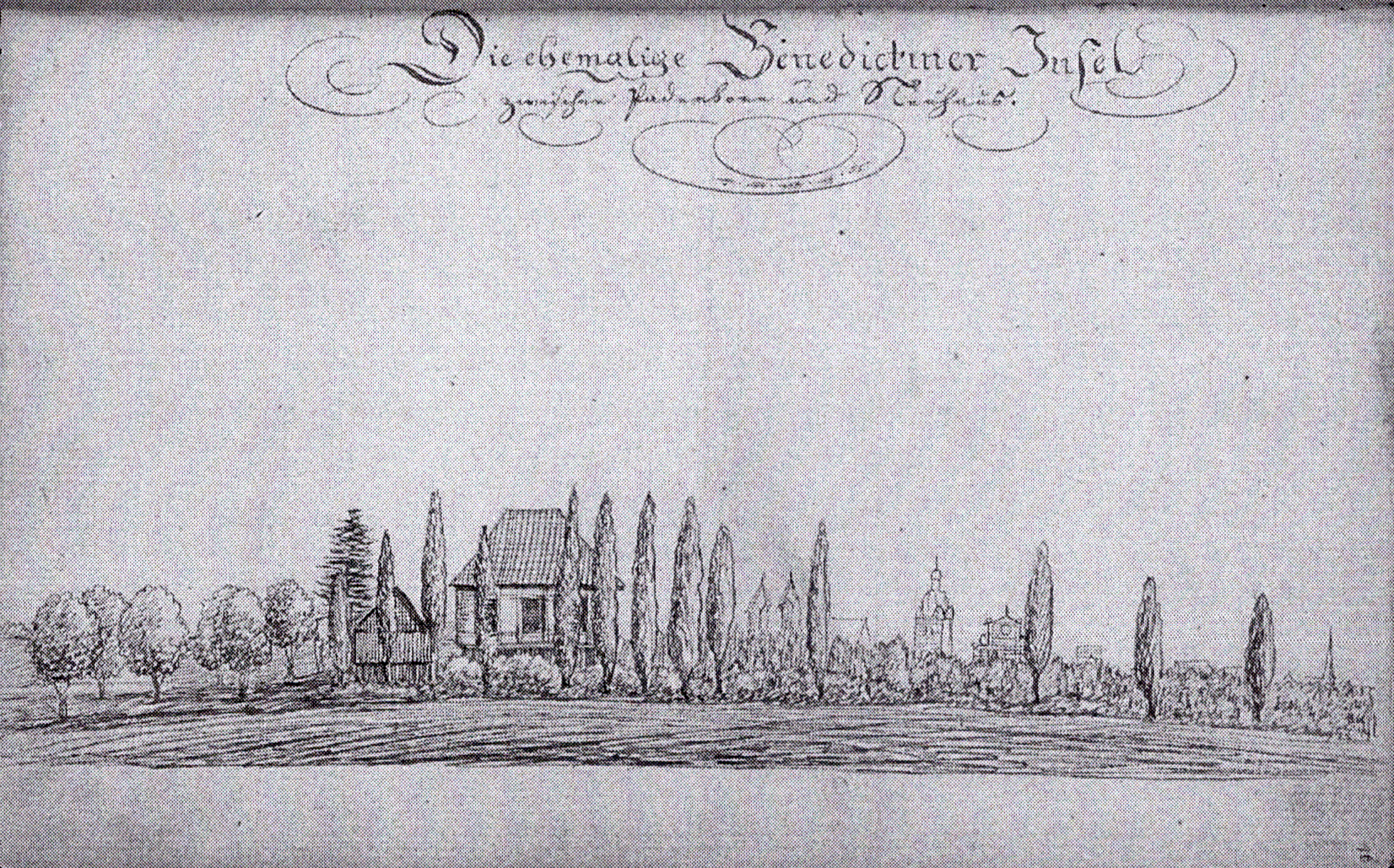[1] Assessment on the „Regulation of the Pader from Paderborn to Neuhaus“, Münster 10 July 1871. LA Detmold, M 1 III E, Nr. 151, unfol.
[2] In a petition to „Fürstbischof“ (prince bishop) Franz Egon von Fürstenberg, some „flood victims“ from the town of Neuhaus claimed in 1789, that the water „[…] stood on their fields, meadows and gardens, especially in the spring time, for more than two months, until it [was] consumed by the air“. Letter of 16 June 1789, LA Münster, Fürstbistum Pb, Hofkammer Nr. 3044, fol. 31r.
[3] Report by the Landrat of Paderborn to the district government Minden, 26 August 1862. LA Detmold, M 1 III E, Nr. 151, unfol.
[4] Cf. written complaint by the Paderborn mill owner Theodor Schwarzendahl to the district government Minden in May 1863. According to a rescript by the government sent to the miller by the then „Landrat“ (district administrator) von Metternich on 18 October 1830, the Prussian state was obliged to clean the Pader annually „from the city wall to the Hoppeker Bridge“. LA Detmold, M1 III E, Nr. 151, unfol.
[5] Quoted after the draft for a „River police regulation for the Pader“, 22 February 1864. LA Detmold, M1 III E, Nr. 151, unfol.
[6] Cf. publication of the Minden regulations in the official gazette of 5 March 1866. LA Detmold, M1 III E, Nr. 151, unfol.











